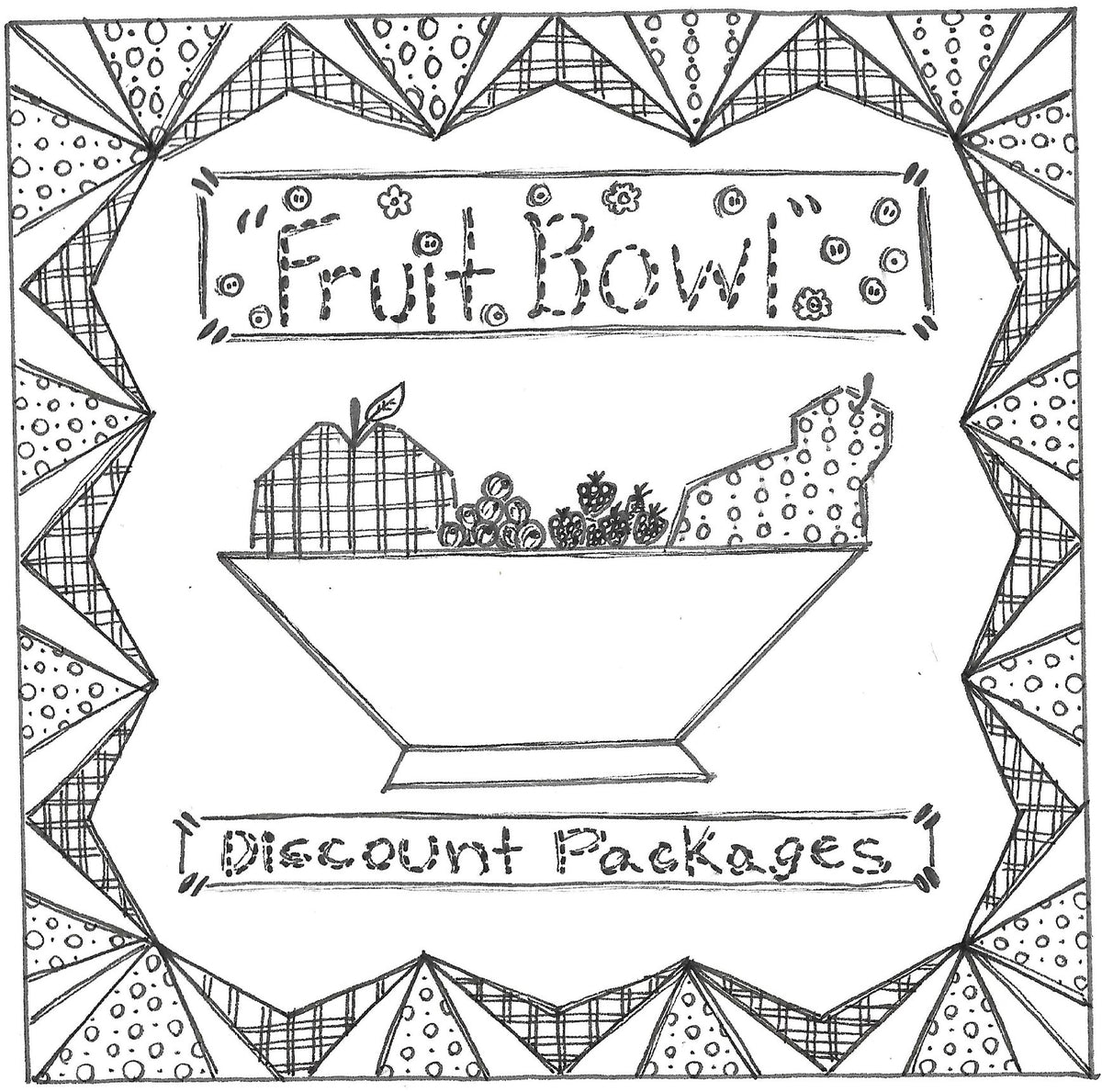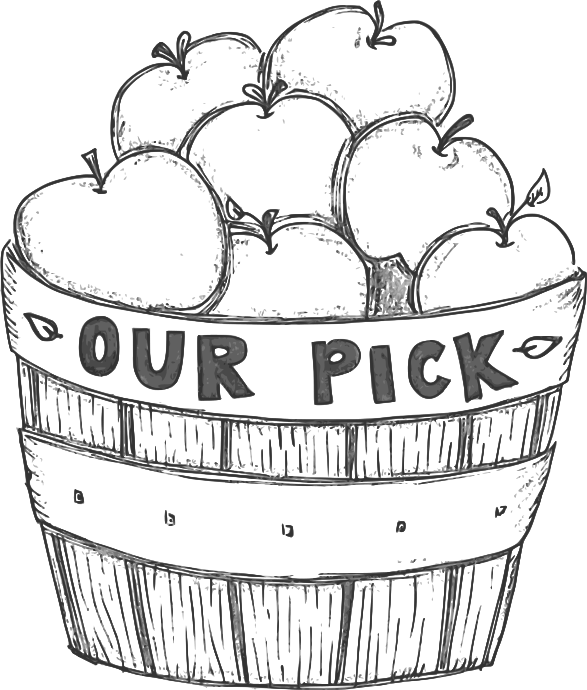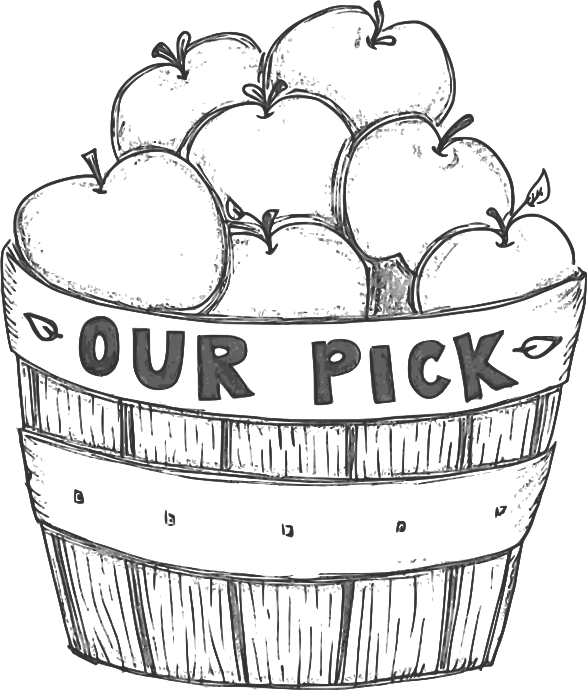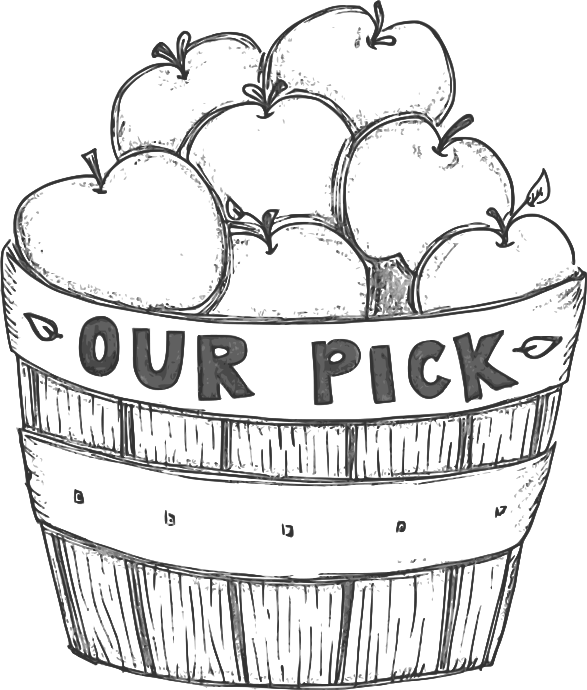Apple Guide
Which Apple Trees Should I Choose?

Two trends have taken the apple-planting world by storm in the last several decades: dwarf apple trees and “disease-resistant” apple varieties. There are many popular misconceptions about both.
Take Disease Resistance with a Grain of Salt
“Disease-resistant” varieties have been bred to be less susceptible to some commonly troublesome apple diseases like scab, fireblight, and cedar apple rust. They are not resistant to insect damage. These new varieties generally have acceptable fruit quality, but while they boast greater resistance to one or two diseases, they are not “easy care” or “low spray.” Disease-resistant cultivars have their place, but should be planted together with other northern-hardy varieties. Northern growers should choose apple varieties first for their vigor and fruit quality, then for their disease resistance. Any tree that is under stress from lack of hardiness or adverse environmental influences will be more susceptible to disease, whether it is genetically disease-resistant or not. Resistant does not mean immune. Learn each tree’s growth habits, strengths, and weaknesses, and attempt to keep it free of stress. A healthy, well-maintained tree will produce better and more disease-free fruit than a stressed-out “disease-resistant” tree.
For Northern Climates, Standard Fruit Trees are the Best Choice
Another popular trend is “dwarf” apple trees vs. the old-fashioned “standard” trees. This idea is attractive to small yard owners because of small tree size, and you've heard that dwarf trees fruit sooner, right? Wrong! (At least in Zones 3 & 4.)
How dwarf fruit trees came about
It is the rootstock that determines the ultimate size of the tree. There are “standard,” “dwarf” and “semi-dwarf” rootstocks.“Dwarf” trees are made by grafting a cultivar onto an inherently weak rootstock, which stunts the growth of the tree. Dwarfing rootstocks were originally developed in England, where long, cool, damp growing seasons can cause apple trees to produce an excessive amount of foliage instead of producing fruit. These rootstocks were chosen precisely because they lacked normal vigor. Grafting cultivars onto such roots is like putting a tourniquet around the stem; the tree simply cannot get as many nutrients, and so does not waste energy on excessive vegetative growth.
England's climate is equivalent to USDA Zones 6 and 7, with a growing season about twice the length of ours here in Northern NY. In our abbreviated growing season, a tree needs all the vigor it can muster to leaf out, flower, fruit, and then harden off for winter....all in the space of a few short months! A dwarf or semi-dwarf tree, because of its subnormal vigor, cannot put out the spurt of growth necessary to thrive in the short season of a northern climate. The result is often poor growth and equally poor fruiting, even for varieties which would otherwise do well in northern regions. In fact, dwarf and semi-dwarf trees have so little vigor that they cannot compete with sod (grass and weeds) for available nutrients. Even in the warmer Zones 5 and 6, dwarf trees will often languish if sod is allowed to grow around them. Commercial chemical orchards solve this problem by applying herbicide around the base of their trees, an option which most backyard gardeners would choose to avoid. Also, dwarf trees have a shorter life span than standards, and so must be replanted every 10-20 years.
St. Lawrence Nurseries does not grow or sell dwarf or semi-dwarf apple trees because they do not have the hardiness, vigor, and disease resistance needed to thrive in our northern climate.
So What Is "Standard"?
Although the word “standard” implies that all apples grafted onto standard rootstock grow to be about the same size, this is not the case. For instance, Red Delicious or McIntosh seeds from cannery waste have often been used to grow “standard” rootstock. Growing in Zone 6 or 7, trees grafted to these rootstocks will often reach a mature height in excess of 30 feet, necessitating a 40-foot orchard spacing and long ladders. In contrast, Malus antonovka, a “standard” seedling rootstock, when grown in Zone 3 or 4 without pruning, will produce a 15 foot tree. (See photo below) The same tree can be kept at 10-12 feet by annual pruning. We use Antonovka for our apple rootstock. It is the most tried-and-true rootstock known, having been used for 500 years in Russia. Northern grown and well pruned apple trees on Antonovka rootstock are equivalent to “semi-dwarf” trees in size, yet still retain the necessary vigor to flower, fruit and become dormant within the time constraints of a short growing season.
Why Don't My Apple Trees Seem To Have Much Root?
If you have ever purchased apple trees from other nurseries, especially dwarf apple trees, you may have noticed that their roots look quite different from the roots on our trees. An apple tree on a standard seedling rootstock (like ours) is often much more “carrot-rooted” than its counterpart on dwarf stock. Dwarfing rootstocks are produced by “stooling”, a process in which branches are bent to the soil and rooted along their length. This produces trees with many tiny fibrous roots, but no main tap root. Fibrous roots are efficient at getting water but have little sugar storage capability. On the other hand, standard rootstocks are grown from seed. They are “real trees” and, when dug, often exhibit pronounced taproots. Their side roots are often minimal, limiting their ability to get water, but their large tap root has tremendous sugar storage potential and so holds good reserves for growth. With adequate water, they will establish much more securely than their dwarf counterparts.

Apple Diseases
Apple Scab
Apple Scab is a fungus which is exacerbated by wet weather. Make sure that there is good air circulation around each tree. This means keeping brush and tall weeds away from the immediate vicinity around the tree, and planting on hilltops or hillsides where breezes blow. Scab can be controlled organically to some degree with sulfur spray. It can be applied in the Spring when careful monitoring of temperature and the duration of wetting periods has determined that infection is likely, and later in the Summer when rain encourages secondary infections. Applications of sulfur can be mixed with horticultural oil before bud-break, but spraying the two together after bud-break will cause burning of leaf tissue. Pure Neem Oil is difficult to spray but is an effective scab inhibitor and promotes orchard health by supporting healthy soil and canopy organisms. A few growers use copper sprays, called “Bordeaux mixtures,” sometimes in combination with horticultural oils, to control scab before the buds leaf out. However, copper is toxic to earthworms and mammals and can hurt the plant if sprayed after bud-break. It has also been found that liming in the Fall (only if your soil is not alkaline) and then mowing or spreading a compost layer over the leaf debris under the trees can limit the number of spores that are carried through the winter.
Fireblight
Fireblight is a bacterium, and is more difficult to control. There are areas of the country where fireblight makes growing apples and pears very difficult. It is usually noticed when infected leaves and branches suddenly turn brown, appearing as if they have been scorched by fire. Branch tips may also display the diagnostic “shepherd's crook” appearance. Closer inspection may show a clear to reddish ooze from infected tissues. Fireblight is worse during periods of moisture and in Spring and early Summer when there is lots of fresh new growth. There is a new biological control for fireblight, “Serenade,” (Bacillus subtilis) which is composed of friendly bacteria that inhibit the growth and spread of fireblight. Because this product works by "taking the parking space" from fireblight, its successful use depends upon early recognition of the symptoms. In areas where risk of fireblight is high, “Serenade” should be applied before any signs of the disease are noticed.
A serious infestation of fireblight may require removal and burning of affected portions (or trees, if necessary.) However, try to wait until mid-summer, or even better, until winter, to cut out and dispose of affected parts, and never cut when the bark is wet. If you do cut out fireblight with pruners, be sure to disinfect them with a 3% solution of hydrogen peroxide or 10% Clorox solution, so you don't pass the infection along. (These disinfectants will corrode your pruner blades, so be sure to oil them afterward). Agrimycin, an agricultural preparation of streptomycin, is somewhat effective against fireblight.
Cedar Apple Rust
Cedar apple rust is a fungus. Since it requires Eastern red cedar or other junipers as its intermediate host, it occurs only where these intermediate host species exist close to orchard. The best control is to cut out all cedars within 2 miles of the orchard, and apply a sulfur spray in the Spring. Do not confuse Eastern red cedar, Juniperus virginiana, with the common White Cedar, Thuja occidentalis, which is not a host for cedar apple rust.




